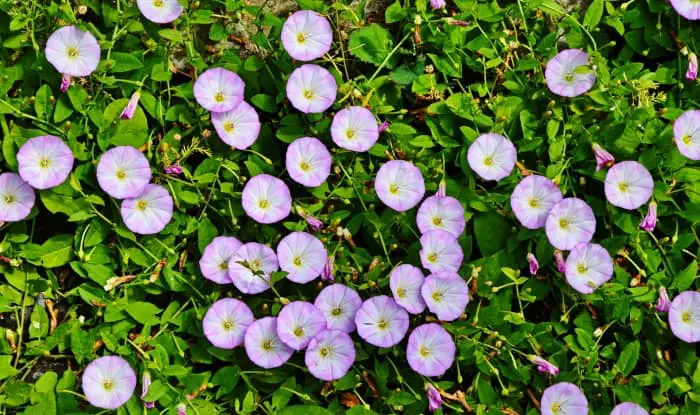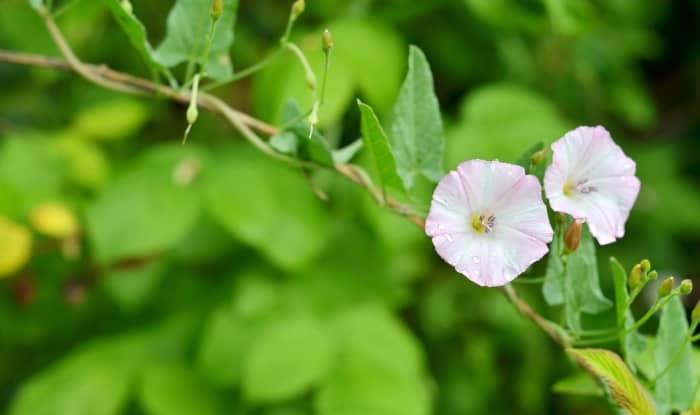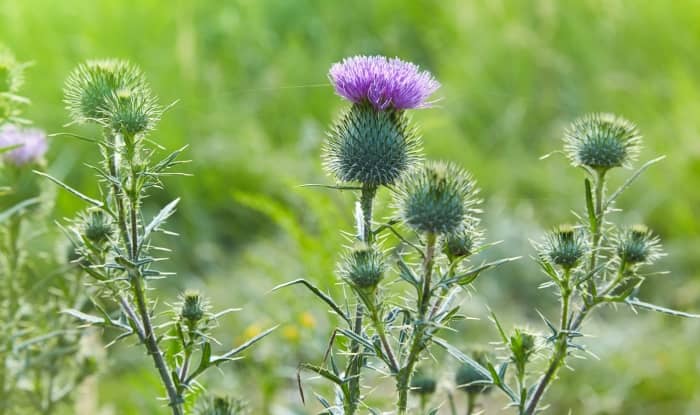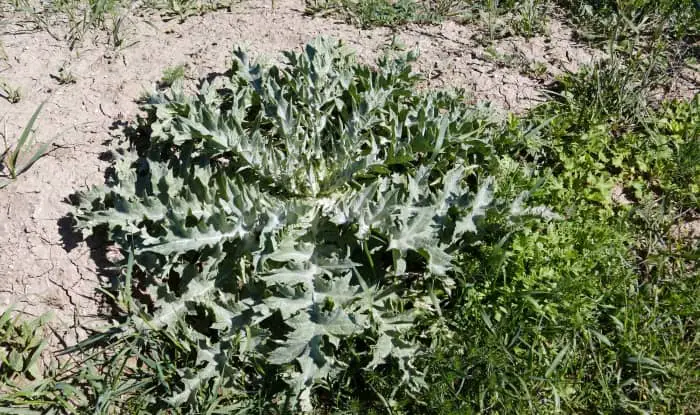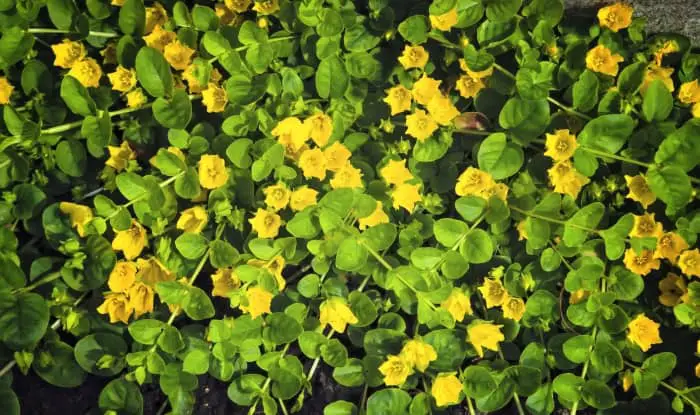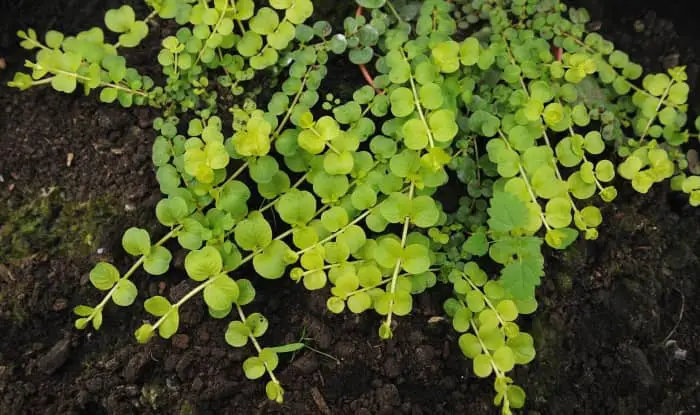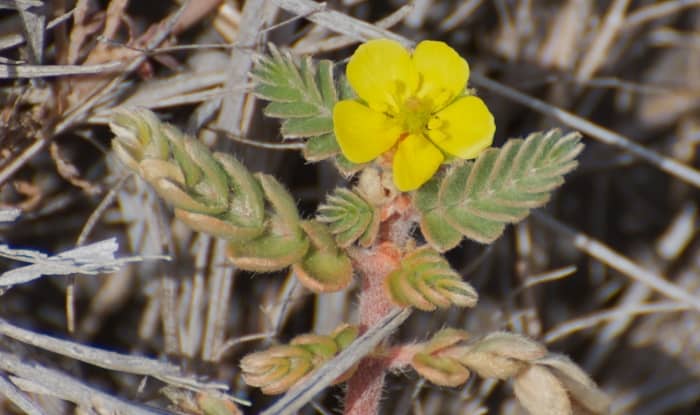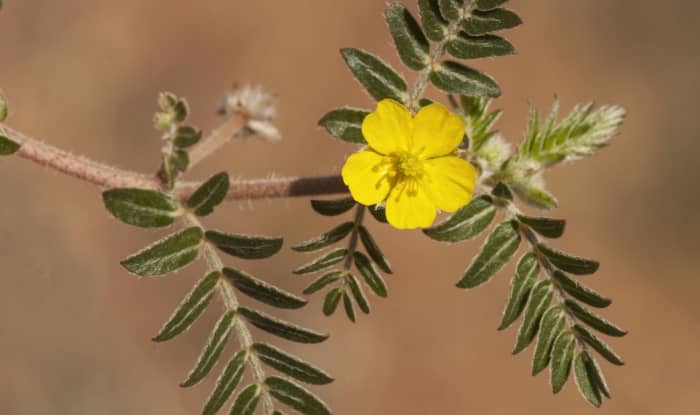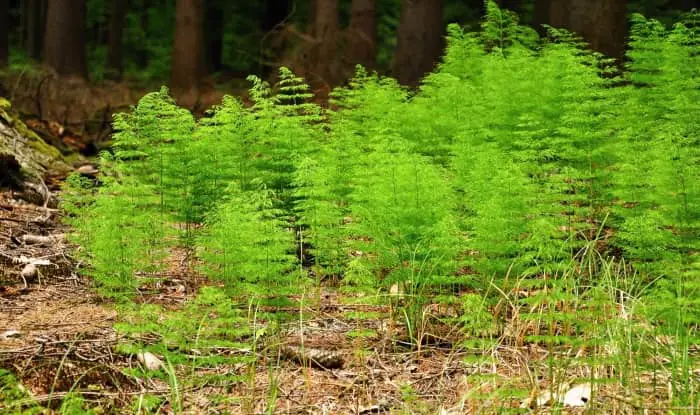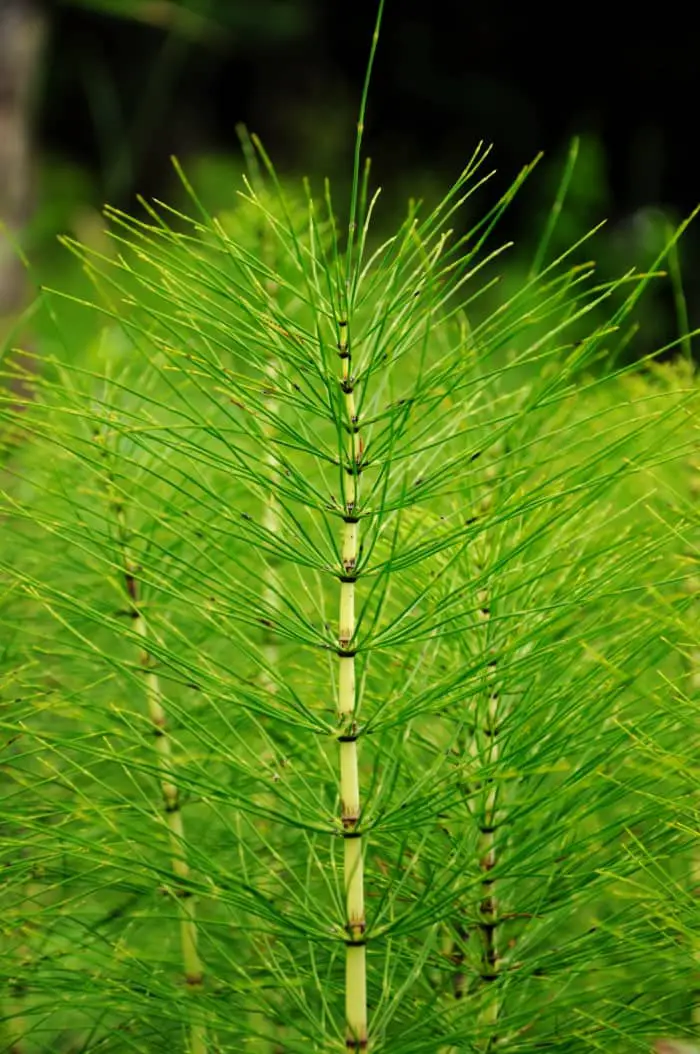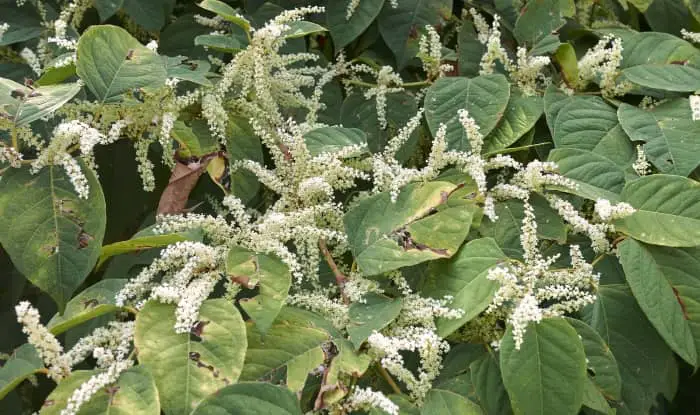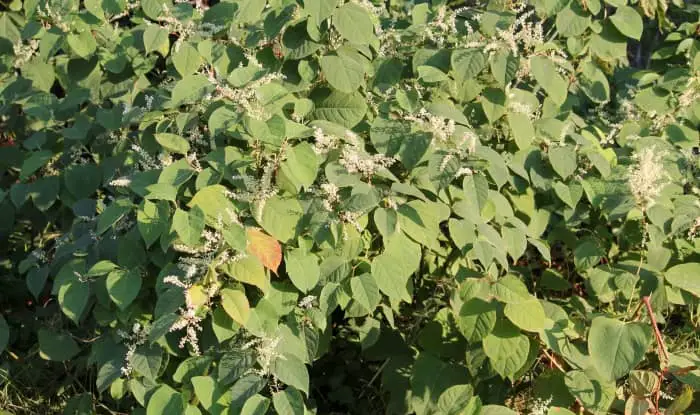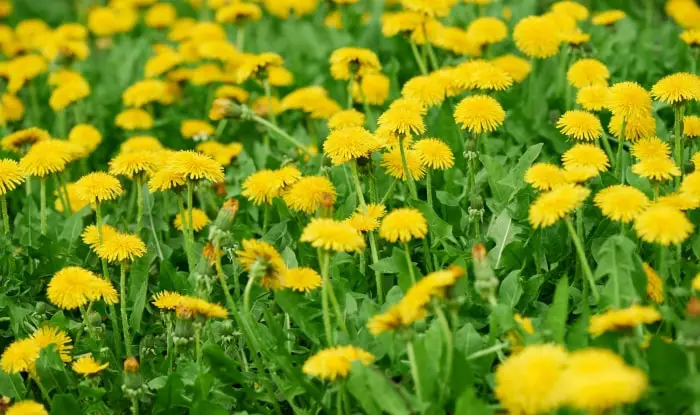Have you found weeds with deep roots in your yard?
I’ll help you identify the weeds using photos and detailed descriptions.
Let’s dive in.
Weeds With Deep Roots
Field Bindweed (Convolvulus arvensis)
Field bindweed is a vine weed with deep roots that’s very difficult to remove once established. The vines grow up to 6 feet long, stretching across the ground and climbing over trees and walls. It’s common to find filed bindweed growing next to fields and roads, but the weed spreads by seeds and rhizomes and can spread into your yard if it’s growing nearby.
Field bindweed has an extensive root system reaching up to 30 ft. deep. The creamy-white, brittle roots break easily, and the weed can regrow from root fragments making it hard to get rid of by hand or cutting back (1). Repeated digging or hoeing can eradicate the weed after several years. Repeated treatment of cut vine ends with systemic herbicides is the easiest way of killing the weed.
Field bindweed flowers from June to September, with trumpet-shaped white, pink, or white and pink striped flowers.
Bull Thistle (Cirsium vulgare)
Bull thistle is an easily recognizable weed well-known for its sharp spines that cover the stems and leaves.
Bull thistle is a biennial weed that develops a basal rosette of leaves in the first year of growth. In the second year, a tall stem grows that can reach up to 7 ft. tall. Pink-purple flowers appear at the top of the stems.
Bull thistle has a deep taproot that develops smaller lateral roots. The taproot is thin and breaks easily, making it difficult to pull this plant from the ground, even with a thick pair of gloves that can withstand the spiky prickles. If you leave any piece of the root behind, the weed regrows.
Related: How To Get Rid Of Deep Rooted Weeds
The lateral roots help bull thistle spread, and the plant thrives in areas with rich soil and good sun exposure.
Creeping Jenny (Lysimachia nummularia)
Creeping Jenny is also known as moneywort. The weed has deep roots and creeps along the ground via runners (stolons) that root at the nodes where they touch the ground. The plant also spreads by seed.
Some gardeners plant creeping Jenny as a groundcover. But the plant can escape gardens and spread, and once established is very difficult to get rid of. Repeated pulling can exhaust the roots and kill the weed, but make sure to act before the weed sets seed. Repeatedly applying chemical herbicides can also kill the roots.
Goat Head Weed (Tribulus terrestris)
Goat head weed is also called puncturevine, bindii, caltrop, and devil’s thorn. The plant is a notorious noxious weed that’s well-known for the sharp thorns on its fruit that are painful when stepped on. The thorns puncture feet, animal hooves, bicycle tires, and thin shoes and spread to new areas.
Goat head weed has a large taproot that needs to be completely removed or killed to prevent the plant from regrowing. The taproot grows deep and has fine rootlets that grow from the center.
Goat head weed germinates in the spring and is fast-growing. Stems quickly grow out from the central taproot in a twisting motion forming a dense mat. The stems reach up to 5 ft. long and are covered in hairs. Within a few weeks of germinating, the plant produces small 5-petalled yellow flowers.
Horsetail (Equisetum arvense)
Horsetail is a fast-spreading prehistoric weed that spreads through runners and spores and develops an extensive and deep root system that makes the weed difficult to remove.
The weed’s roots grow 2m deep, and the runners can extend beneath sidewalks, garden fences, walls, and driveways to spread into neighboring locations. To eradicate horsetail, you need to remove all of the roots, a difficult task, or treat the plant repeatedly with herbicides.
The weed likes to grow in wet soil with low oxygen levels. Changing the soil conditions to make it more suitable for desirable plants is another method of long-term control.
The distinctive appearance of horsetail, with wiry stems and needle-like leaves, makes the plant easy to identify.
Japanese Knotweed (Reynoutria japonica)
Japanese knotweed is an invasive weed with deep roots that’s one of the most persistent and troublesome weeds to find growing in your yard.
The tough roots clump together and resemble wood-like trunks. They burrow deep underground and send out a network of rhizomes from which new shoots emerge from the ground forming dense stands (2).
The weed quickly grows, adding 10cm per day up to 11 ft. tall. The stems are red, hollow, and bamboo-like. The large green leaves are heart-shaped with a pointed tip and can reach up to 7 inches long. In late summer, the weed produces small white flowers that grow in clusters (panicles).
Japanese knotweed can cause structural damage to buildings and burst through tarmac and paving. It may be necessary to hire a professional to eradicate this weed once it becomes established on your property.
Dandelion (Taraxacum officinale)
Dandelions are common lawn weeds that grow a thick taproot that usually reaches 6-18 inches deep (but can penetrate up to 15 ft.) (3). You can easily identify dandelions by their bright yellow flowers, consisting of a flowerhead packed with many florets.
Dandelions develop a basal rosette of leaves from which a single long stalk grows upright with a single flowerhead at its end. After the flowers, a puffy seedhead appears with the seeds dispersed by the wind.
The taproot is strong and difficult to pull out. But you can get tools designed to remove the taproot in one piece, or you can dif the root out with a shovel. Selective herbicides can also kill dandelions on your lawn without harming your grass.
References:
- Bindweed – https://www.rhs.org.uk/weeds/bindweed
- Japanese Knotweed Roots: What’s The Big Deal? – https://www.japaneseknotweedspecialists.com/news/japanese-knotweed-roots
- Dandelion – https://www.maine.gov/dacf/php/gotpests/weeds/factsheets/dandelions-cal.pdf

